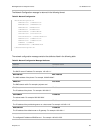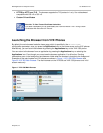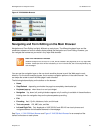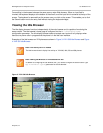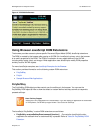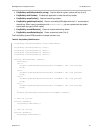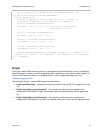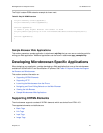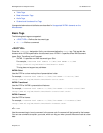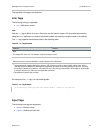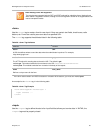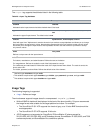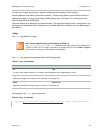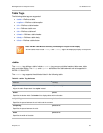
Web Application for Polycom Phones UC Software 5.0.0
Polycom, Inc. 46
// get the styled points of the SKs so app can add whatever object they
// want to that area after calling hideToolBar()
function getSKPoints(){
// Returns a JSON object with two properties, X & Y. To convert to
// JS object you must use the eval function on the JSON object.
var one = PolySoftKey.getSoftkeyPoint(0);
var oneObj = eval('(' + one + ')'); //to help avoid syntax errors,
//wrap with '(' ')' chars
var two = PolySoftKey.getSoftkeyPoint(1);
var twoObj = eval('(' + two + ')');
var three = PolySoftKey.getSoftkeyPoint(2);
var threeObj = eval('(' + three + ')');
var four = PolySoftKey.getSoftkeyPoint(3);
var fourObj = eval('(' + four + ')');
document.getElementById("points").innerHTML = oneObj.X + ":" + oneObj.Y + "," +
twoObj.X + ":" + twoObj.Y + "," + threeObj.X + ":" + threeObj.Y + "," + fourObj.X +
":" + fourObj.Y;
}
PolyUri
The PolyUri custom DOM extension gives you a few general controls/notifications, such as a notification
when the browser is hidden or shown as opposed to other applications on the phone. It also enables you
to push a URI back to the phone—in a loopback fashion—from a loaded Web page. See Using
Telephone Integration URIs.
The JavaScript PolyUri.* custom DOM extensions are as follows:
PolyUri.pushUri(string) Enables you to push any Polycom internal URI. For example, Play:: and
Tel::.
PolyUri.shownSig.connect({function}) Connects the JavaScript function supplied to the
callback when the browser is visible. For example, after being resumed from the call appearance
list.
PolyUri.hiddenSig.connect({function}) Connects the JavaScript function supplied to the
callback when the browser is not visible. For example, when put on hold in the call appearance list.



